Palace Queen Humsafar Express – Connecting Two Historically Rich Cities
Travelling from South to West India has now become easier with the luxurious Palace Queen Humsafar Express. The Ministry of Railways has introduced this brand new, weekly train between two tourist destinations, Mysuru and Udaipur, in order to improve the connectivity between the cities, and to benefit passengers who travel long-haul routes.
 Honorable PM Narendra Modi flagged off the Humsafar Express train on 19thFebruary, 2018, paving the way to increase tourism in these two fascinating cities. The inaugural train (Train no 06231) has commenced from Mysuru at 15:30 hrs and is scheduled to reach Udaipur on 21st February, by 11:30 hrs.
Honorable PM Narendra Modi flagged off the Humsafar Express train on 19thFebruary, 2018, paving the way to increase tourism in these two fascinating cities. The inaugural train (Train no 06231) has commenced from Mysuru at 15:30 hrs and is scheduled to reach Udaipur on 21st February, by 11:30 hrs.
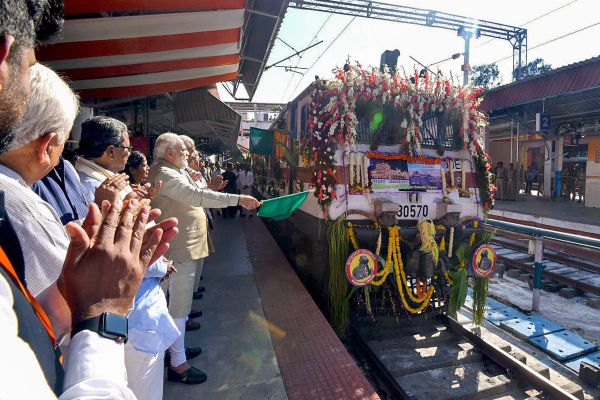
Cities covered in the schedule
The Palace Queen Humsafar Express will pass through the states of Karnataka, Maharashtra, Gujarat, Madhya Pradesh and Rajasthan, and will run via Mandya, KSR Bengaluru, Devangere, Hubbali, Belagavi, Miraj Junction, Pune Junction, Vasai Road, Surat, Vadodara Junction, Ratlam Junction and Chittorgarh.
- Though there are 14 halts, the train will cross 347 intermediate stations between Mysuru Junction and Udaipur City.
- The total distance covered is approximately 2267km, and the time taken will be around 43 hours.
- As per the weekly schedule, Train No.19667 will depart from Udaipur every Monday at 21:00 hrs and reach Mysuru every Wednesday at 16:25 hrs.
- Similarly, Train no 19668 will depart Mysuru every Thursday at 6:15 hrs, and reach Udaipur City every Saturday at 1:40 hrs.
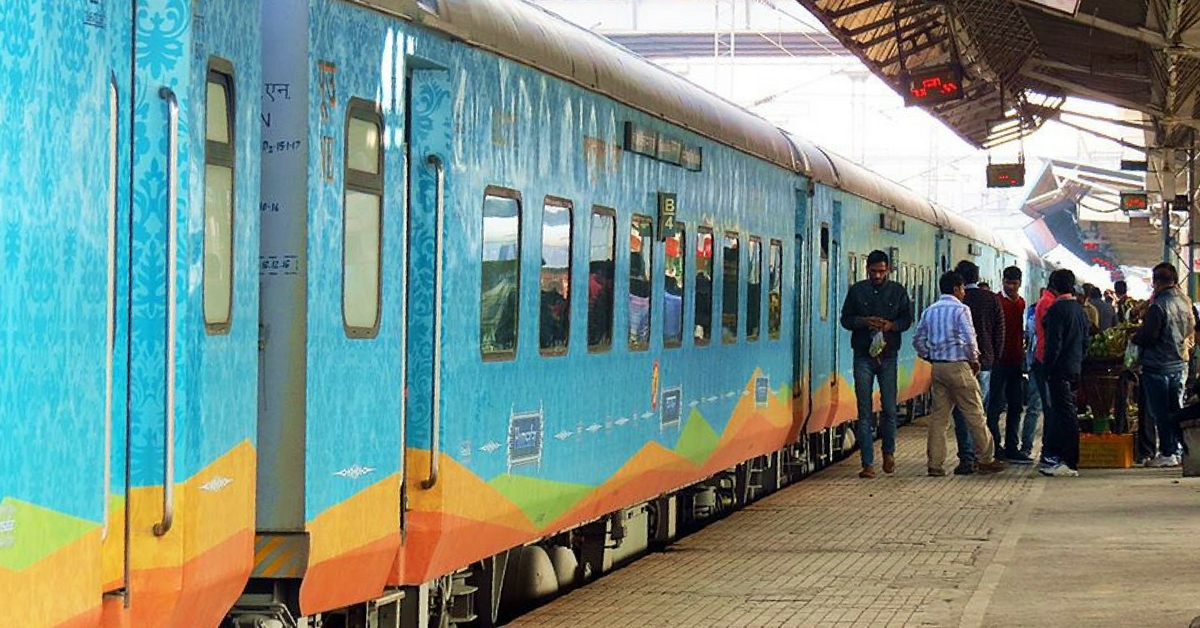
Features of the Palace Queen Humsafar Express
The passengers will have a surreal experience on board. Take a look at the exquisite features available for passengers:
- Similar to the other such trains, all the coaches are modern 3-tier sleeper trains.
- There are 19 coaches, 16 of which are fully air-conditioned.
- The exterior of the train has durable, anti-graffiti vinyl coating.
- Each coach is equipped with modern facilities including tea and coffeemakers, unbreakable mirrors, baby diaper changing pads, and fire and smoke detectors.
- You also have a GPS-based passenger information system at the end of each coach which alerts passengers on various stoppages, the train’s speed, announcements and other important information on LED displays.
- The stickers for seat numbers are braille-integrated to aid the visually-challenged.
- In order to be more energy-efficient, all the lights on board are LED
- Each column of berths has a laptop and mobile charging points.
- The seats are well-upholstered and the cabins are comfortable.
- Fire extinguishers are placed outside washrooms for the safety and security of passengers.
- There are CCTV cameras on board. However, they are fitted strategically to protect the privacy of passengers
- Each berth has curtains which enhance the privacy of the passengers.
- Khadi bed kits are available for each coach.
- If you have brought your own food, you could use the heating and refrigeration options on board.
- You also have a small pantry for self-service, where you can make tea, coffee or soup.
- Hot and delectable food is available at a nominal charge from the pantry.
- As an initiative of Swachh Bharat, every cabin has a dustbin and an odor-control system.
- The toilets are bio-toilets, which ensure that waste is disposed of hygienically. The bio-toilets also have odor-controlled systems and occupancy indicators.
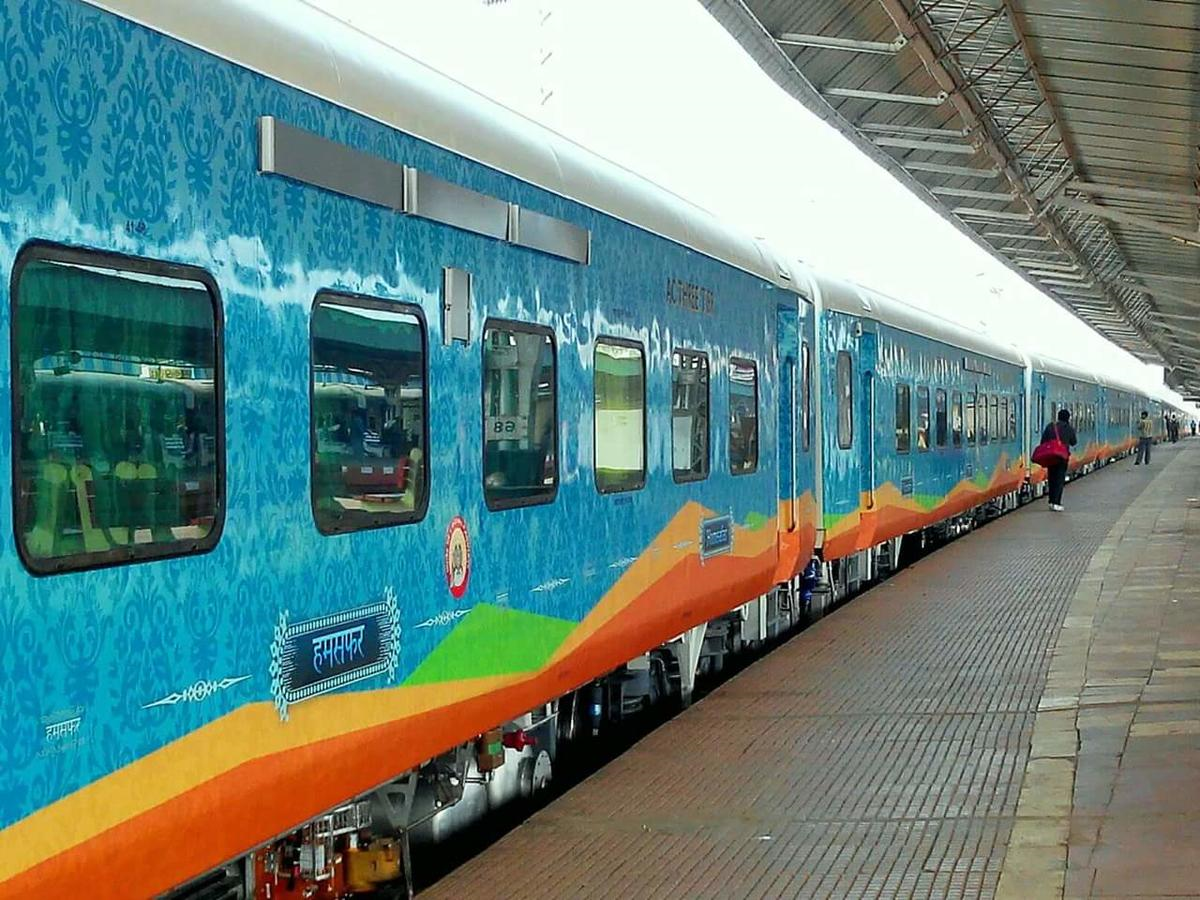
Electrification of railway line from Mysuru to Bengaluru KSR
During the inaugural event, PM Modi also dedicated an electrified railway line from Mysuru to KSR Bangalore, which is a stretch of 139 kms. This initiative is not only going to be hugely beneficial for the passengers travelling by this route, but will help the government save enormous diesel costs.
Until now, the majority of the locomotives operating in this route are diesel trains. The electrification of the railway line will now lead the way to introduce more electric trains, which will help the economy immensely.
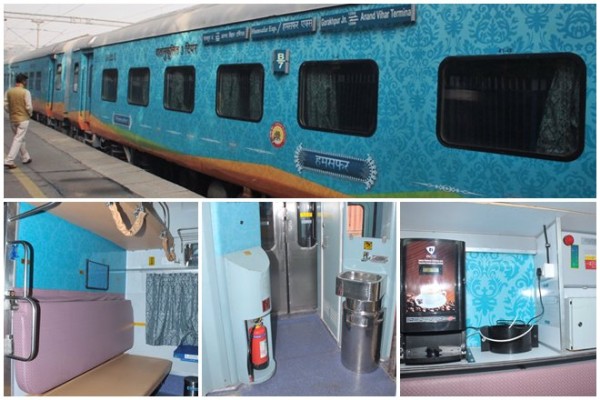
Why railway electrification is important
Electrical locomotives are more advantageous when compared it its diesel counterpart. Electric trains help in improving air quality as less carbon is emitted, reduces commuting time, decreases the loss of power at higher altitudes, and operates quietly. Moreover, unlike a diesel train, an electric train can be halted instantaneously during an emergency.
The electrification of this stretch was undertaken simultaneously with the track doubling up work, which commenced in 2007, and was completed in phases, over the years. The total estimated cost of the entire project is approximately 1088 crores, and the funding has been undertaken by both the State government and the Railways.
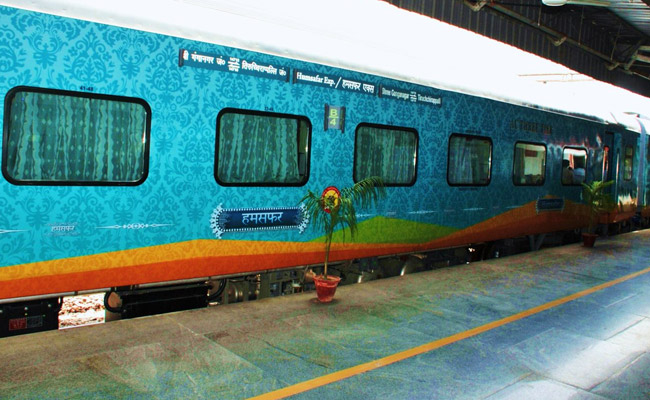
This electrification protects will be instrumental in helping the government save around 10 lakhs per day (3 crores per month), which is exceptional. Furthermore, it also aims to reduce commuting time, as trains will not have to pull up at stations to change engines. The travel time will now be reduced by 15 minutes for the Shatabdi express trains, and around 20 to 30 minutes for normal passenger trains.
Video – The Railzone



















